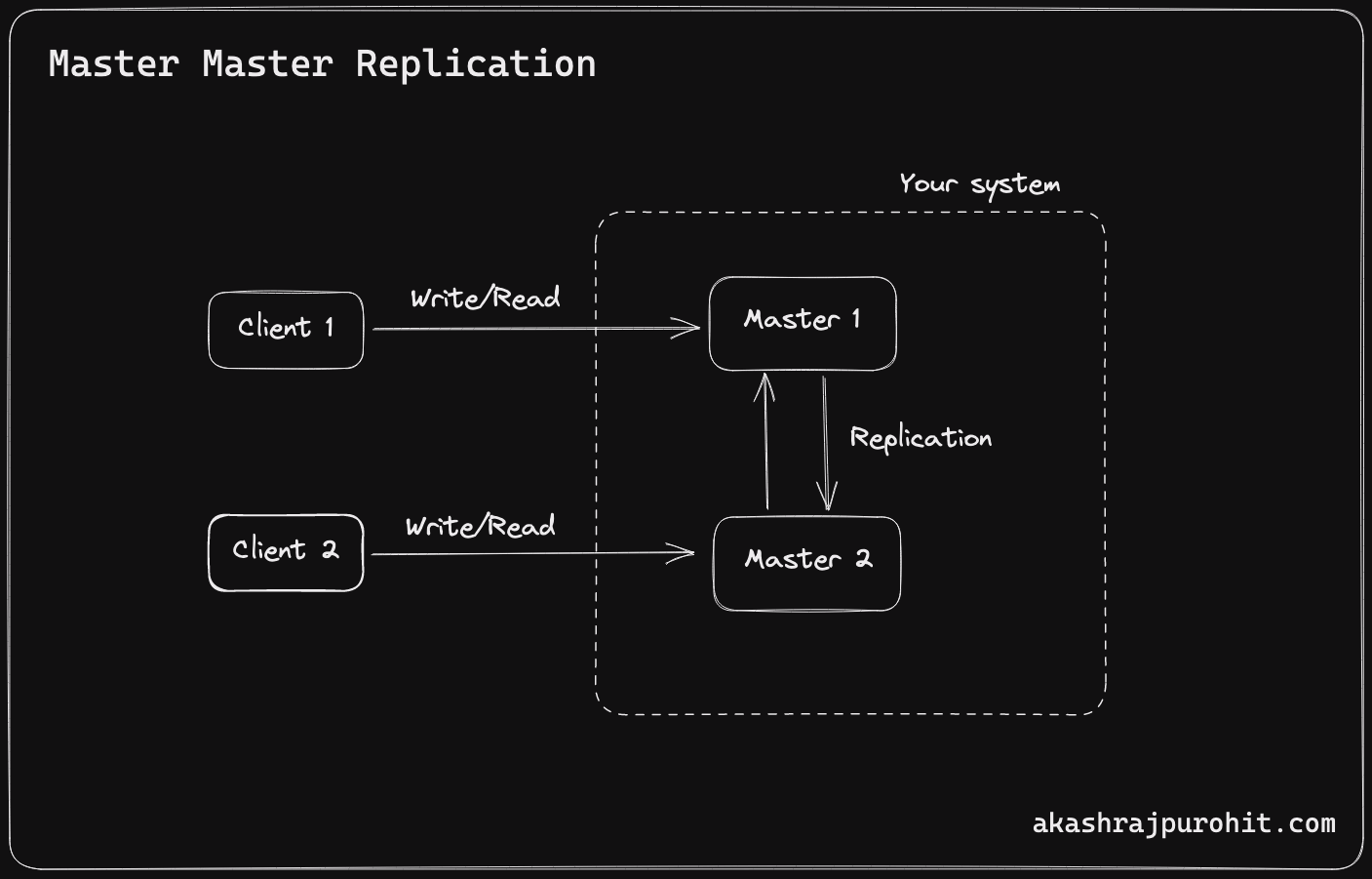Introduction
In a distributed system, replication is a method used to ensure the availability and durability of data. Replication involves creating multiple copies of data across different nodes in the system.
This approach not only provides better fault tolerance but also improves performance by distributing the load across different nodes.
Master-Master Replication is one such replication technique that’s commonly used in database systems. As the name suggests, this approach involves having multiple master nodes, where each node can accept both read and write requests.
In contrast, other replication techniques like Master-Slave replication only allow one master node to handle write requests, while the other nodes are used for read-only purposes.
In this article, we’ll take a closer look at what Master-Master Replication is, how it works, and what its benefits are.
Master-Master Replication in Database
Master-Master Replication, also known as Active-Active Replication, is a technique used to improve the availability and performance of database systems.
In this approach, there are multiple master nodes, where each node can accept both read and write requests. The data is replicated between the master nodes, ensuring that each node has the most up-to-date version of the data.
The following diagram illustrates the Master-Master Replication architecture:

As shown in the diagram, there are two master nodes in the system, and both nodes can accept both read and write requests. Whenever a write request is made to one node, it’s replicated to the other node, ensuring that both nodes have the most up-to-date version of the data.
This approach not only provides fault tolerance but also improves performance by distributing the load across different nodes.
How Master-Master Replication Works
Master-Master Replication works by replicating data between the master nodes in the system. Whenever a write request is made to one of the master nodes, the data is replicated to the other node, ensuring that both nodes have the most up-to-date version of the data.
This approach ensures that even if one node goes down, the other node can continue to serve requests, ensuring the availability of the system.
The following steps outline how Master-Master Replication works:
-
A write request is made to one of the master nodes.
-
The data is written to the database on the master node.
-
The data is then replicated to the other master node.
-
The other master node confirms the replication, ensuring that both nodes have the most up-to-date version of the data.
-
If one of the master nodes goes down, the other node can continue to serve requests, ensuring the availability of the system.
AI captions for your TikToks, Reels & Shorts
Upload your video, pick a viral style, download with captions. Minutes instead of hours. Zero editing skills needed. 85% of people watch videos on mute. Captions boost shares by 15%. Stop leaving engagement on the table.
Benefits of Master-Master Replication
Master-Master Replication has several benefits, including:
-
High availability: Because data is replicated across multiple nodes, if one node goes down, clients can still access the database through the other nodes.
-
Load balancing: By spreading read and write traffic across multiple nodes, master-master replication can help distribute the load on the database system.
-
Geographic distribution: By replicating data across multiple locations, master-master replication can improve performance for clients in different regions.
-
Data consistency: Because all nodes have the same data, there is no need to synchronize data across nodes.
Real-world example
An example of master-master replication in action is the YouTube video database. With over 1 billion hours of video watched each day, YouTube relies on a distributed database system to manage its massive amount of data.
Each YouTube server uses a master-master replication setup to replicate data across multiple locations. This setup helps ensure that videos can be accessed quickly and efficiently from anywhere in the world.
Conclusion
In conclusion, master-master replication is a powerful technique that can help improve the availability, scalability, and performance of your database system.
By allowing for read and write access to any node in the cluster, this technique provides a high degree of flexibility and redundancy.
Whether you’re running a small business or managing a global network of servers, master-master replication can help you achieve your database goals.